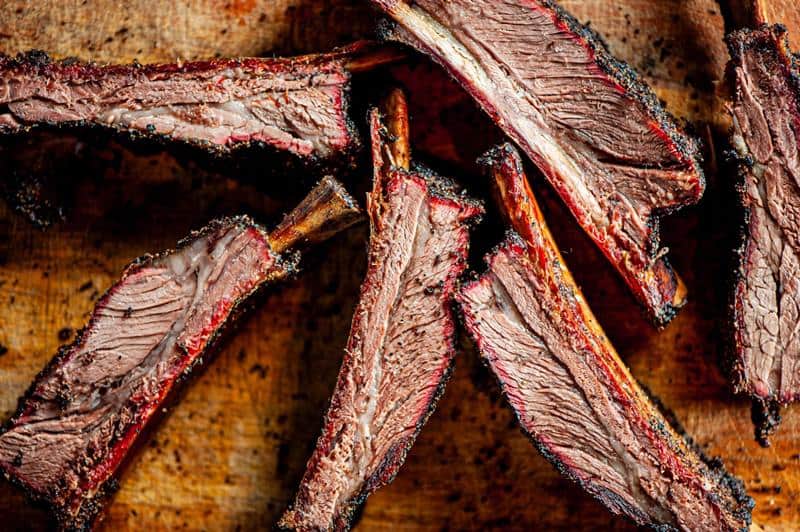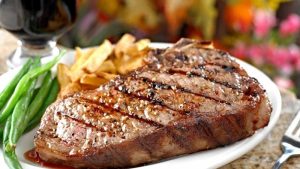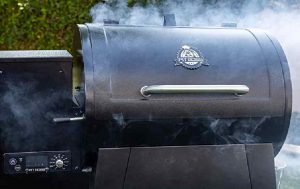Ribs are an all-time favorite cut of meat, used in cuisines across the globe and enjoyed for their tender, succulent texture.
They can be grilled, smoked, roasted, baked, or fried, but always benefit from slow cooking due to the connective tissue found in both beef and pork ribs.
Ribs come in a variety of types, from different animals, each offering a unique flavor and texture when cooked with various methods and seasonings.
There’s a wide range of rib options, including classic barbecue staples and more exotic cuts like lamb or fish ribs.
- Riblet Varieties
- Types of Beef Ribs
- Types of Pork Ribs
- Lamb Riblets
- Fish Ribs
Riblet Varieties
Each type has its own unique characteristics and works best with specific cooking techniques and sauces.
The key to cooking delicious ribs is to use low temperatures and long cooking times, ensuring that the meat remains juicy and tender.
- Types of Beef Ribs
- Types of Pork Ribs
- Lamb Riblets
- Fish Ribs
Types of Beef Ribs
- Short Ribs
- Flanken-Style Ribs
- Baby Back Beef Ribs
- Beef Back Ribs
Beef ribs have come a long way, shedding their old reputation for being tough and chewy.
When cooked properly, they transform into tender, mouthwatering delights that are gaining popularity in the world of BBQ.
The key is to cook them low and slow, allowing the connective tissues to break down and create that perfect texture. Let’s dive into the different types of beef ribs you can enjoy.
Short Ribs:
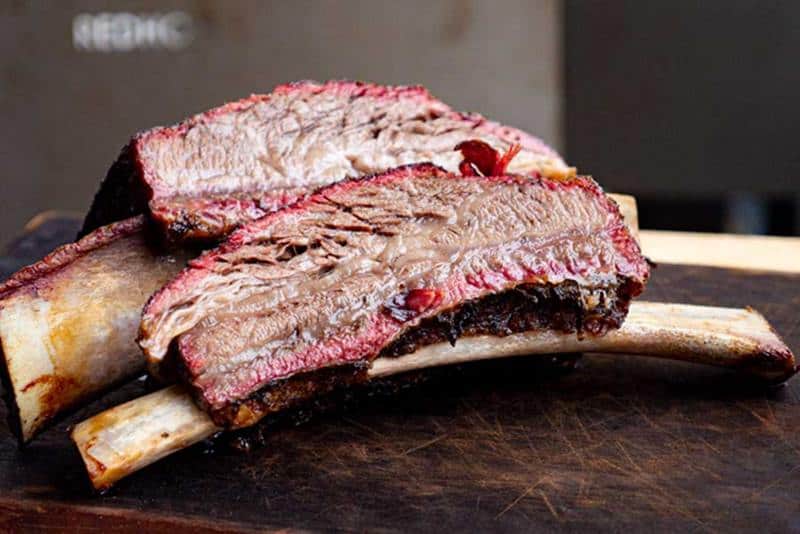
These meaty ribs come from the lower part of the cow’s ribcage, close to the breastbone and belly.
Short ribs can be found in two different cuts: plate short ribs and chuck short ribs. Both cuts have a rich, beefy flavor and are best cooked low and slow, like a brisket.
Flanken-Style Ribs:
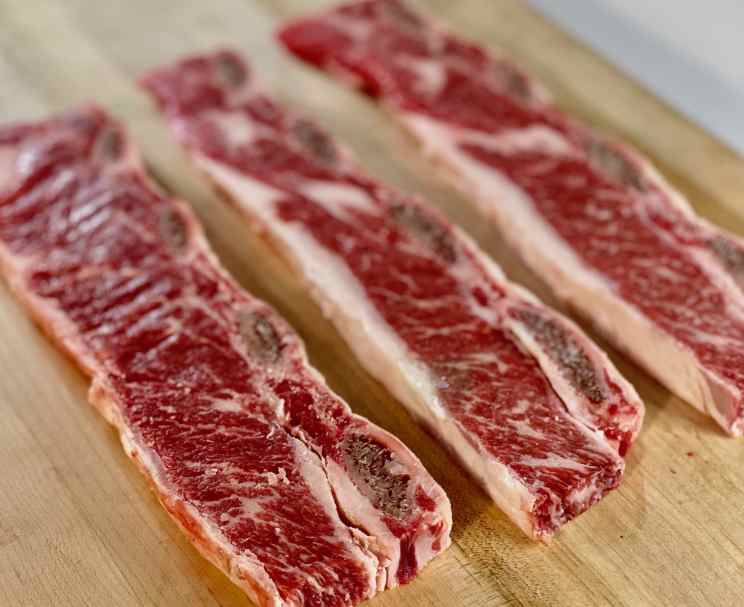
Cut from the same area as short ribs but sliced differently, flanken-style ribs are thinly cut, about half an inch thick, and often found in Asian and Mexican cuisines.
They’re high in fat and perfect for searing at high heat on the grill or braising. In Korean BBQ, these ribs are known as “Kalbi” and are cooked quickly over high heat.
Baby Back Beef Ribs:
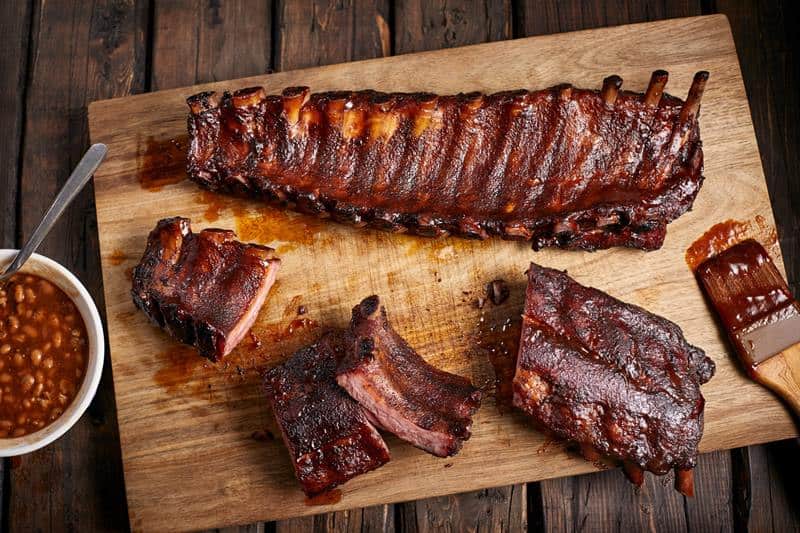
Originating from the upper part of the ribcage near the loin, baby back ribs are curvier and shorter than other ribs.
They consist mainly of bone and fat, with a small amount of meat between the bones.
Best cooked low and slow on the grill or in the oven, these ribs are the same ones found in bone-in ribeye steaks and prime rib roasts.
Beef Back Ribs:
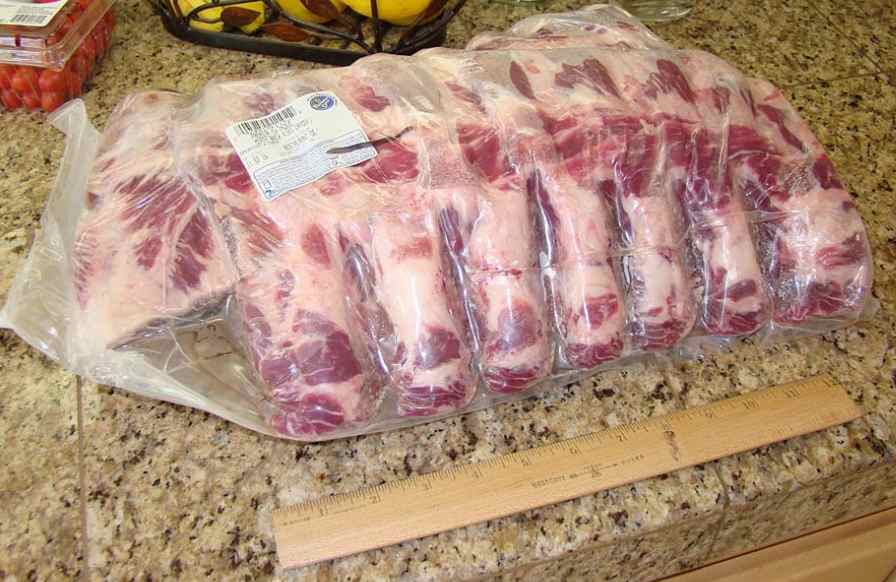
These ribs come from the rib primal after the ribeye muscle or prime rib has been removed. The meat is found between the bones, rather than on top, like in short ribs.
While they don’t offer much meat, beef back ribs make for a budget-friendly and easy smoke, providing a delicious and satisfying meal.
Types of Pork Ribs
- Spareribs
- Baby Back Ribs
- St. Louis-Style Ribs
- Country-Style Ribs
Pork ribs are a fan favorite at barbecues, known for their tender, juicy, and flavorful meat.
There are four main types of pork ribs to consider for your next cookout: spare ribs, baby back ribs, St. Louis-style ribs, and country-style ribs.
Spareribs:
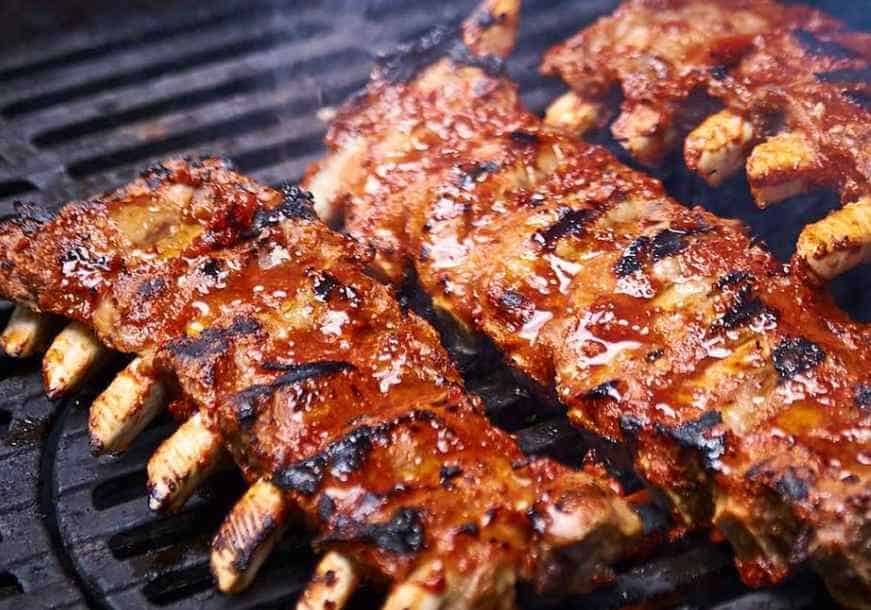
These ribs come from the lower section of the ribcage and extend around the stomach. They’re fattier than baby back ribs, making them richer and more flavorful.
Spareribs are usually 6 to 8 inches wide and best cooked by braising, smoking, or grilling.
Baby Back Ribs:
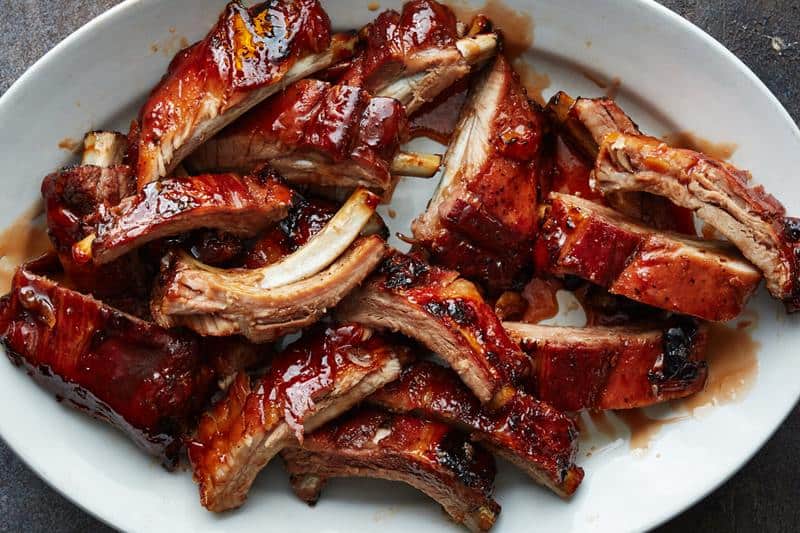
Also known as back ribs, baby back ribs come from the top section of the pig where the backbone meets the ribcage.
They’re smaller and leaner than spareribs, making them quicker to cook. Baby back ribs are best cooked low and slow on the grill, in the oven, or in the smoker.
St. Louis-Style Ribs:
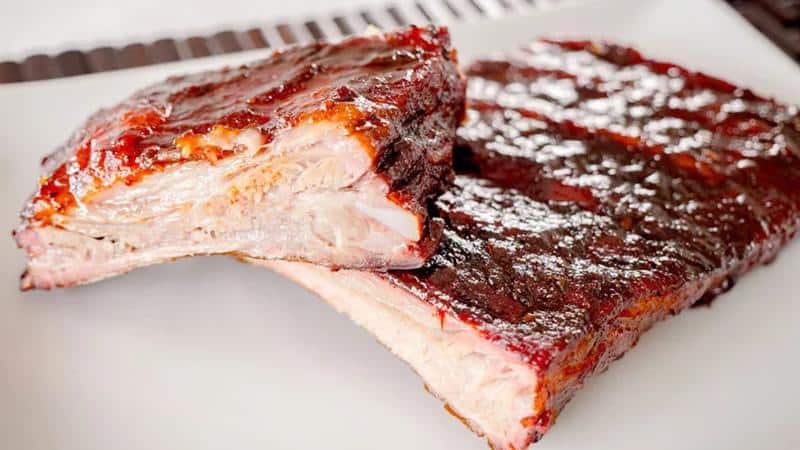
Cut from the belly of the hog after the belly has been removed, St. Louis-style ribs are trimmed into a rectangular shape, resembling baby back ribs.
Uniform in shape and meatiest among the cuts, they’re best prepared low and slow on the grill, in the smoker, or in the oven.
Country-Style Ribs:
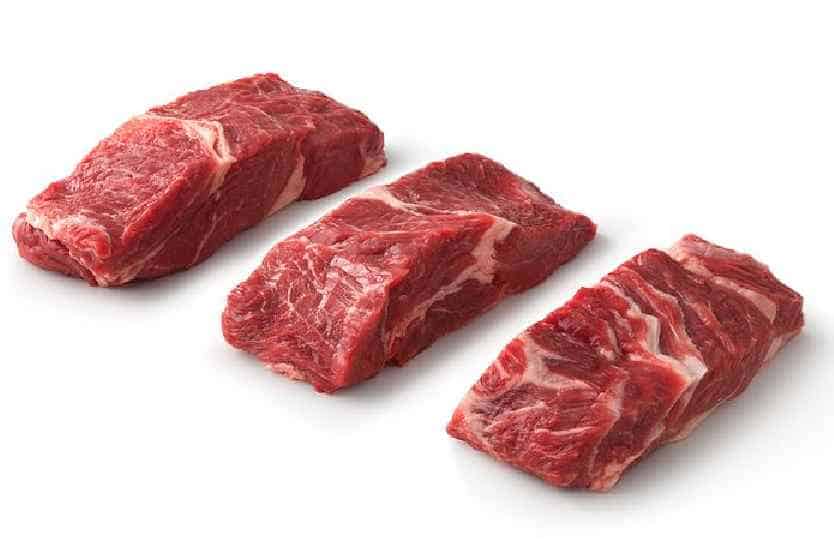
Unique for their boneless appearance, country-style ribs are cut from the chuck eye roll (pork shoulder steaks).
They’re best cooked low and slow for tender results, as they come from the fatty, muscular section of the shoulder blade near the loin.
Each type of rib has its own unique characteristics, but they all share one thing in common: when cooked right, they are incredibly delicious and perfect for any barbecue.
Related >> 11 Best Meat Slicers For Home Use
Lamb Riblets
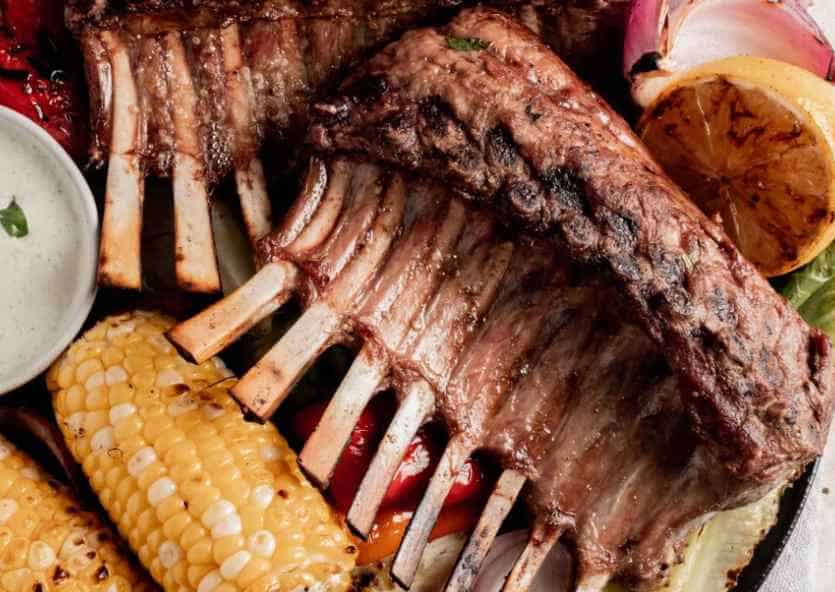
Lamb riblets, the lesser-known but equally delicious counterpart to pork and beef ribs, are cut from the end of lamb breast ribs and boast a meaty texture and rich flavor.
With a high ratio of fat to meat, lamb riblets are versatile and respond well to various cooking techniques, making them perfect for serving as a main course or an appetizer.
These riblets can be grilled, baked, broiled, or braised, but it’s essential to be cautious not to overcook them.
Marinating the lamb riblets before cooking is highly recommended, as it enhances the flavor profile and tenderness.
They pair well with a range of seasonings and sauces, including Asian or Middle Eastern flavors, such as Vietnamese-style sweet soy dipping sauce, or Moroccan-inspired spices like turmeric, cumin, allspice, and harissa paste.
Additionally, lamb riblets can be served as a rack or transformed into riblet lollipops.
Mint is a natural companion to lamb, so don’t hesitate to serve your riblets with mint jelly for a unique and delectable spin on this rib variety.
Fish Ribs
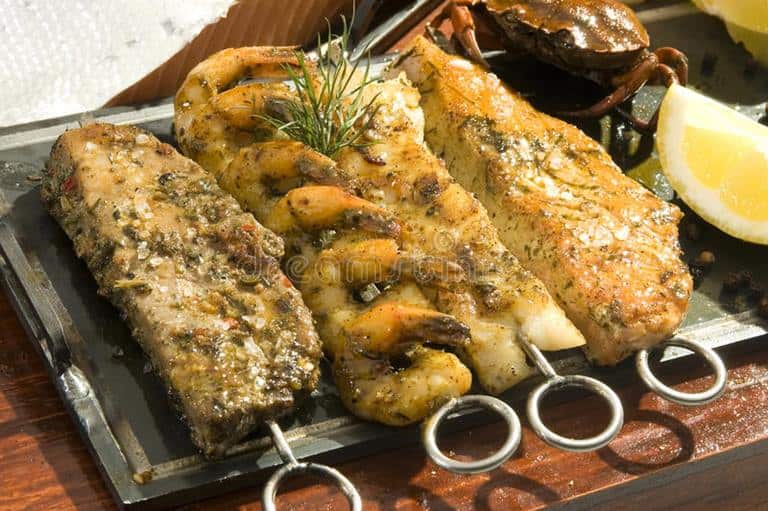
- Pacu fish ribs
- Tuna ribs
Fish ribs, while not as popular as their beef or pork counterparts, are an intriguing and flavorful alternative that can offer a unique dining experience.
Two types of fish ribs, pacu fish ribs, and tuna ribs, are considered delicacies in certain regions of the world and can transform the way you think about ribs.
Pacu fish ribs come from a large, meaty Brazilian fish, which is a relative of the piranha.
These ribs are occasionally found in restaurants and available through specialty seafood delivery services.
Pacu fish ribs have a sweet, nutty, and fruity flavor, with crispy skin and a surprisingly meaty interior.
You can grill, bake, sauté, or even fry these ribs after simply seasoning them with salt, pepper, lemon juice, and olive oil.
They pair well with barbecue sauce, making them an ideal substitution for pescatarians at a Southern barbecue.
Tuna ribs, on the other hand, offer a hands-on eating experience reminiscent of traditional ribs.
These ribs can be prepared in various ways, including raw, as served at some Japanese restaurants, where they’re accompanied by seashells for utensils to pick the meat off the bone. This method is a traditional way of eating tuna in Japan.
Alternatively, you can oven-grill tuna ribs for a more familiar preparation.
Fish ribs, though rare, provide a tasty and exciting alternative to standard ribs. Give pacu fish ribs or tuna ribs a try, and you might just find a new favorite dish to enjoy.
Related >>How Long to Smoke a Brisket Per Pound (Timelines Chart)
Related >> How to Cook Sirloin Steak
Final Thoughts
Ribs are a beloved cut of meat with a diverse array of options to choose from.
Whether you prefer pork, beef, lamb, or fish ribs, mastering the art of slow cooking and experimenting with different seasonings will help you create mouthwatering dishes that will keep you coming back for more.
>> Visit our extensive BBQ guides page for more articles that are similar to this one.
Greetings! I’m Chad, a 43-year-old barbecue aficionado hailing from the beautiful state of Texas. I’m thrilled to invite you on a culinary journey as we explore the art of grilling and smoking together. Through this blog, I aim to ignite your passion for barbecue by offering:
Scrumptious, time-honored BBQ recipes passed down through generations, guaranteed to tantalize your taste buds.
Expert guidance on mastering the grill, smoker, and diverse cooking techniques to elevate your barbecue game.
Recommendations on choosing the perfect tools and equipment tailored to your grilling requirements.
An inside look at the latest trends, innovations, and advancements in the ever-evolving world of barbecue.

